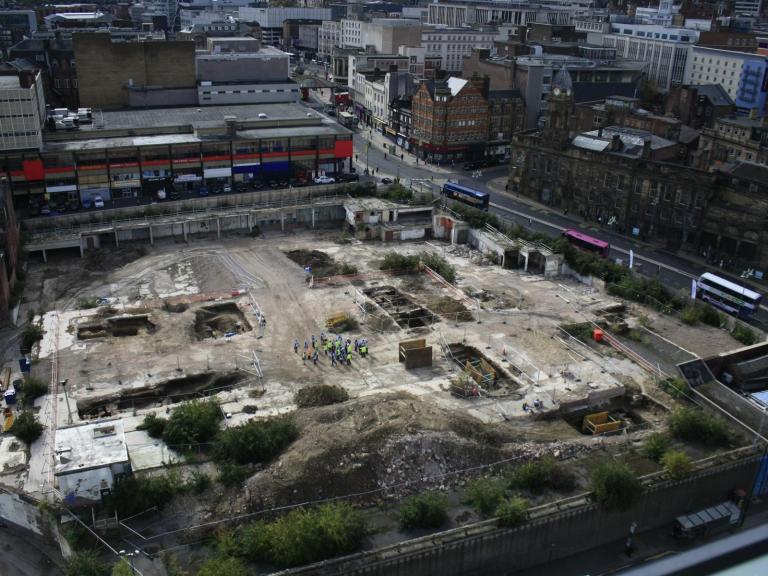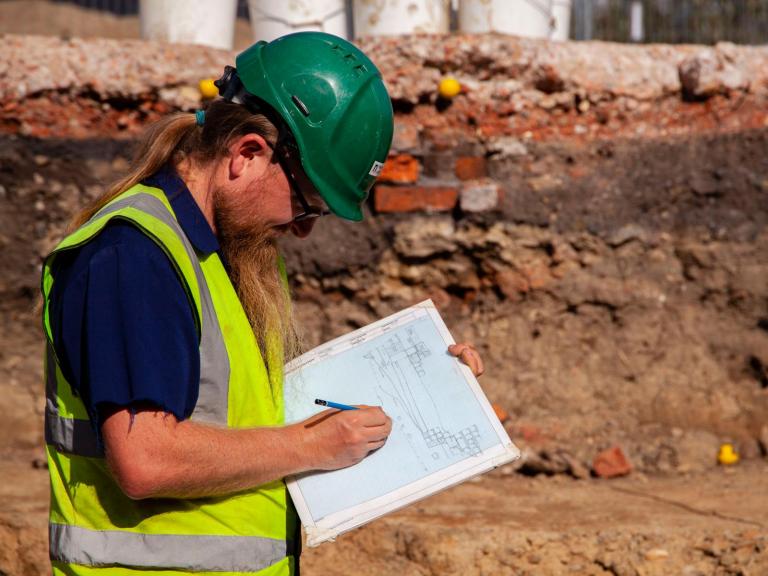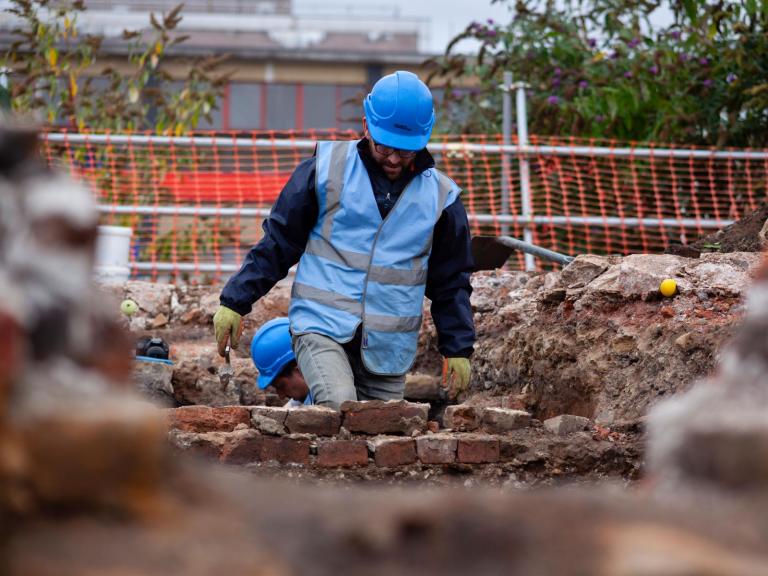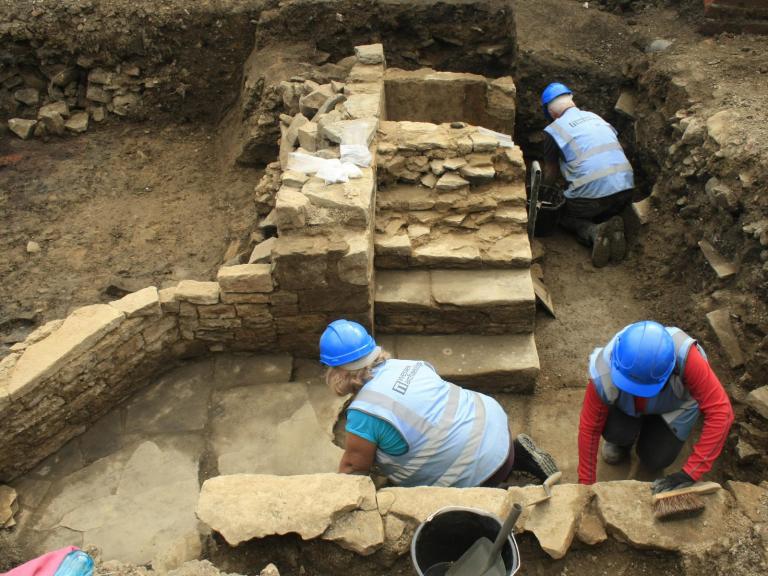You must, surely, all be aware of the excavations at Sheffield Castle up here in the north? Well, we thought it was all over – then there were boreholes. I managed the process of taking a borehole sample, under the watchful eye of Wessex Archaeology geoarchaeologist, Richard Payne.
A moat and a motte
The excavations revealed the edge of the moat in several trenches. Other trenches proved the existence of a motte as part of the earlier castle. In order to investigate these further, it was necessary to target specific areas with a series of boreholes.
This consisted of a borehole in each of the three trenches on the motte, and three sets of transects (lines of boreholes) across the width of the moat.
Sample process
The percussion rig is used in borehole surveys to drill holes in the ground into which plastic sleeves are placed to capture a sample of the deposits.
These are either opened and recorded on site or sealed up and stored off site to be recorded at a later date.
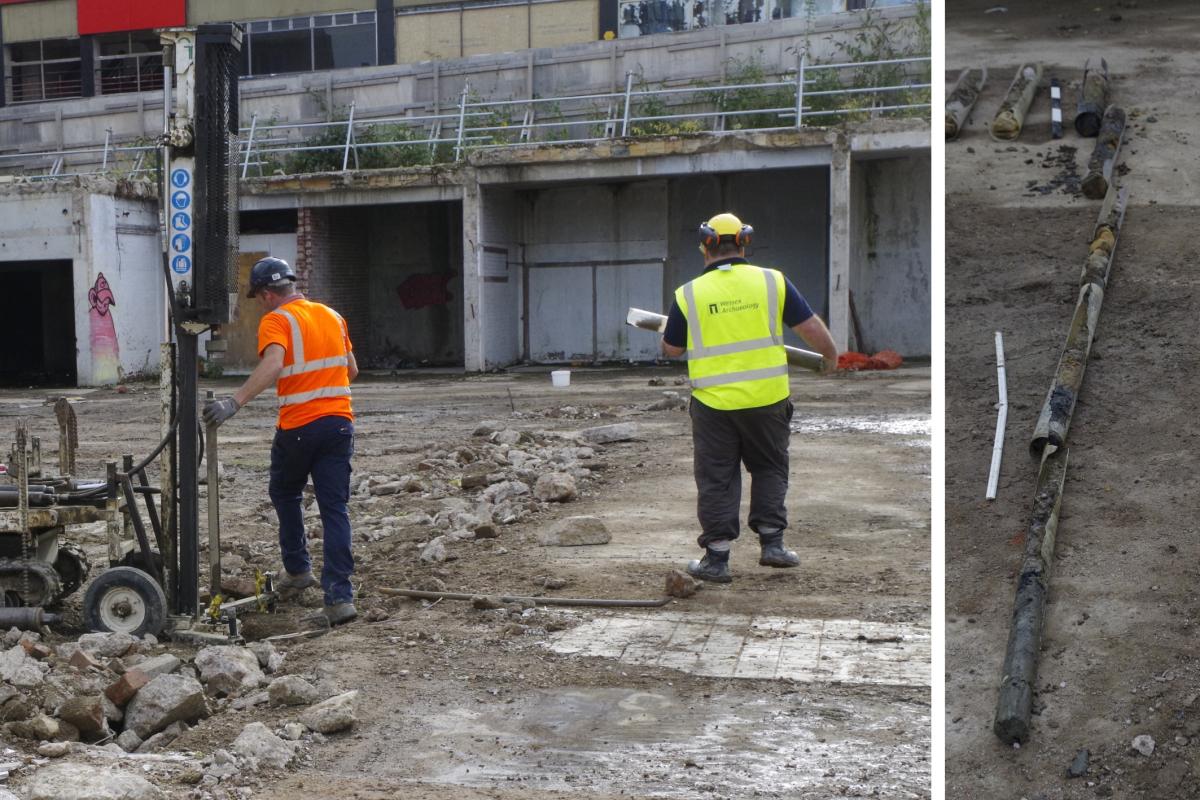
Borehole results
The motte was sampled, and the moat was found in some of the boreholes (to a depth of 6 metres!). It appears that the moat might have been narrower than first anticipated, but this will be confirmed with analysis of the boreholes.
We have to wait for the results to be put into a deposit modelling programme and for the logs to be printed before we can start to answer any questions about the castle environs.
So, the next local borehole survey is on me!

